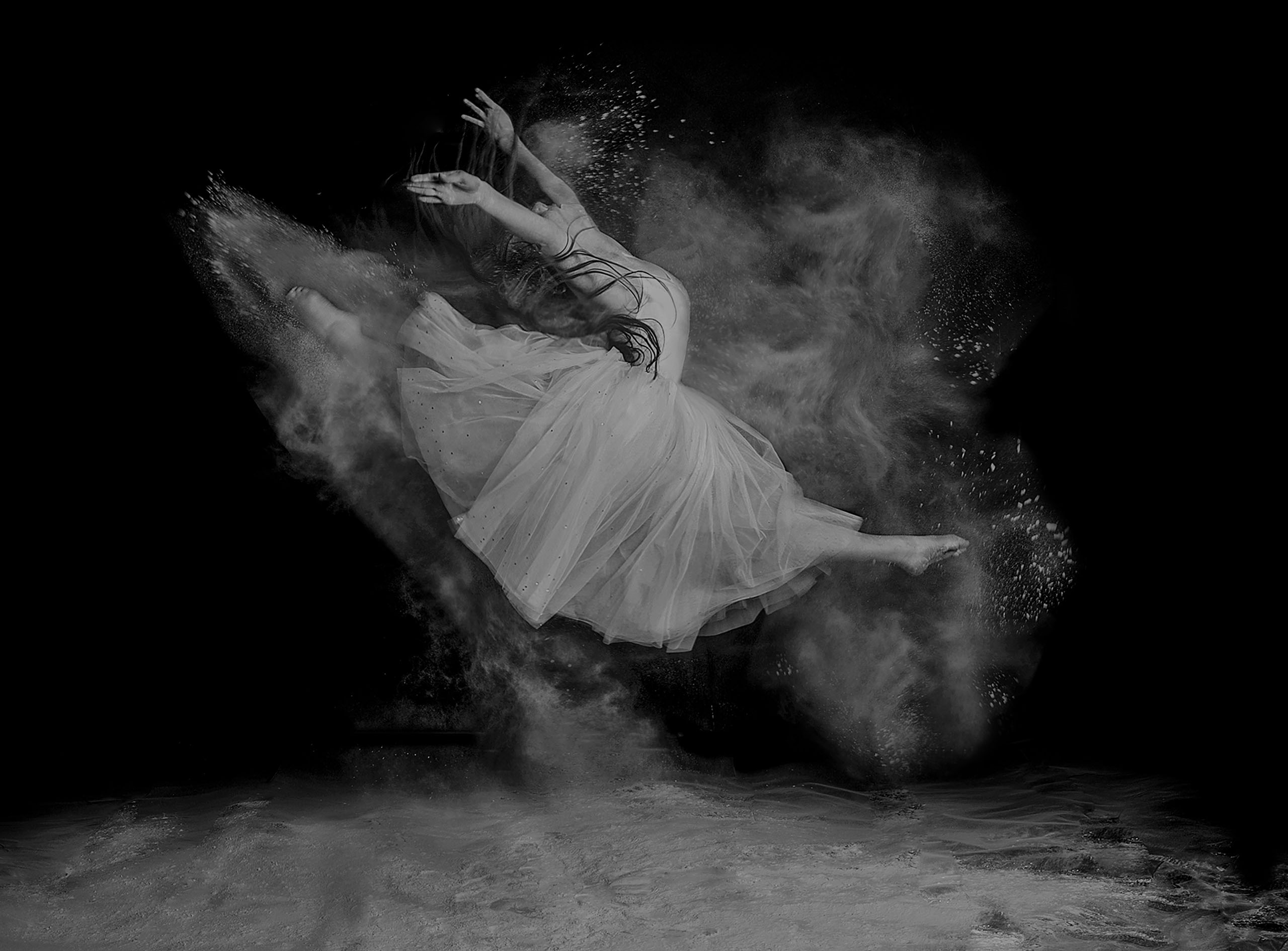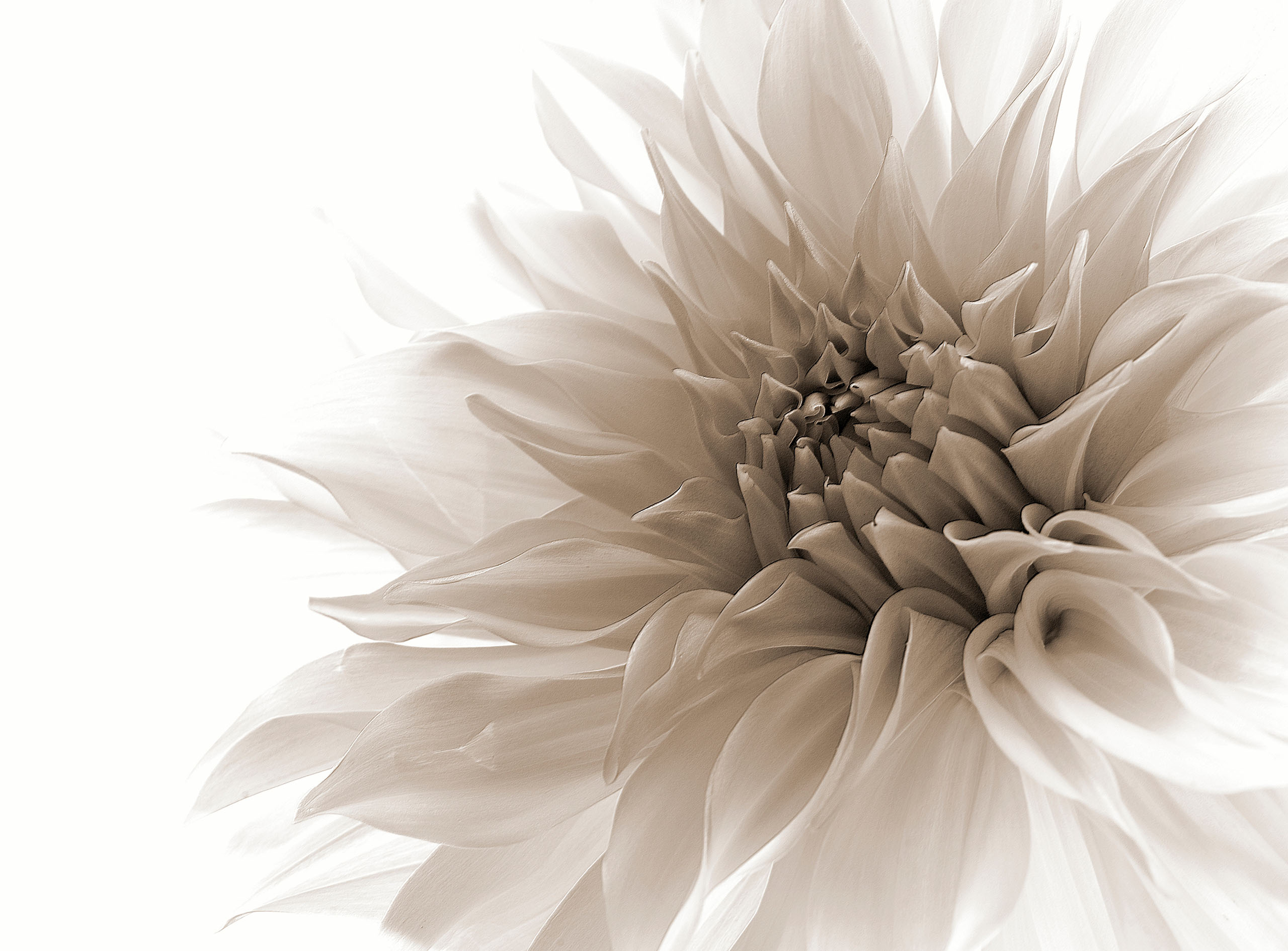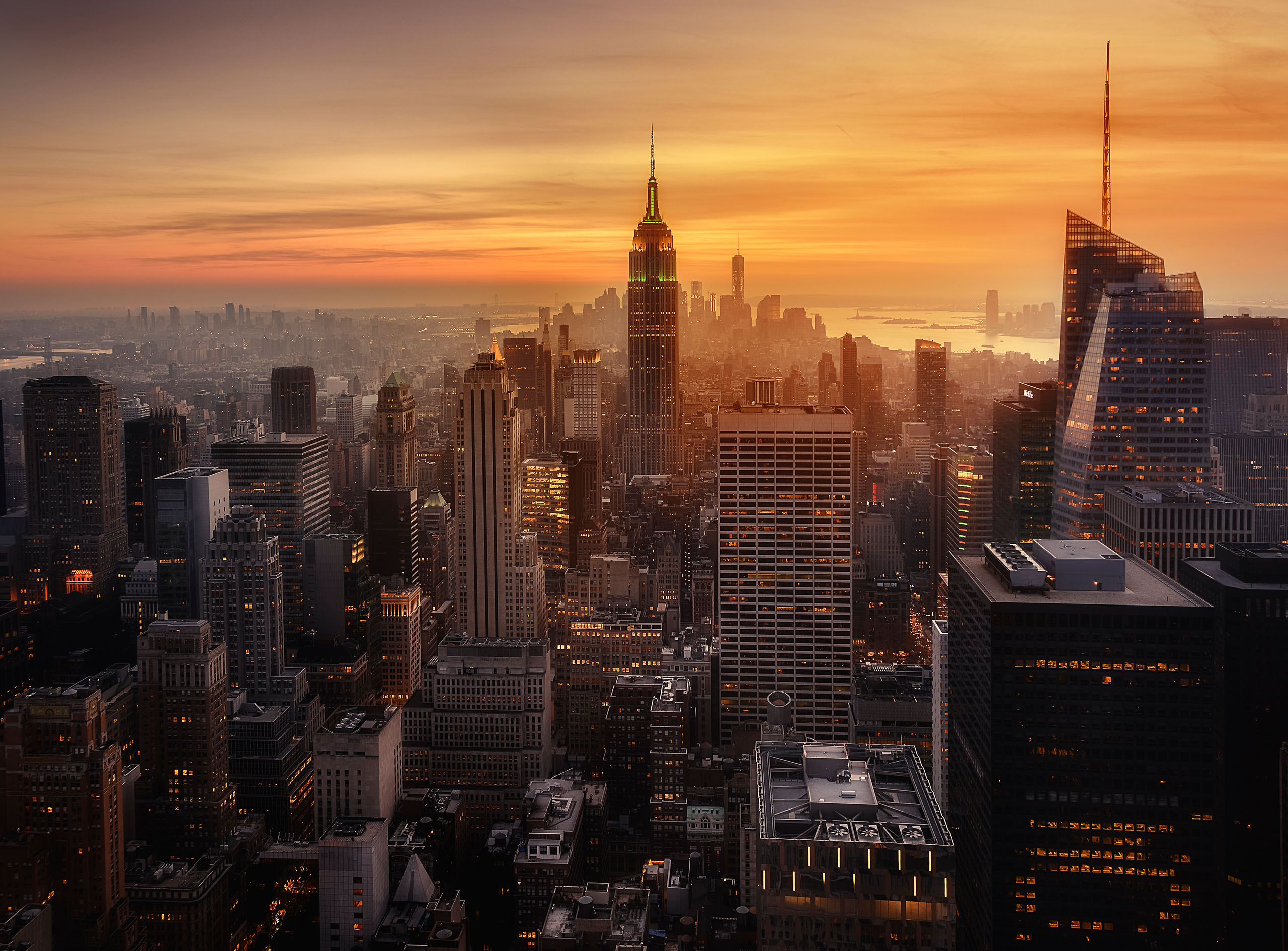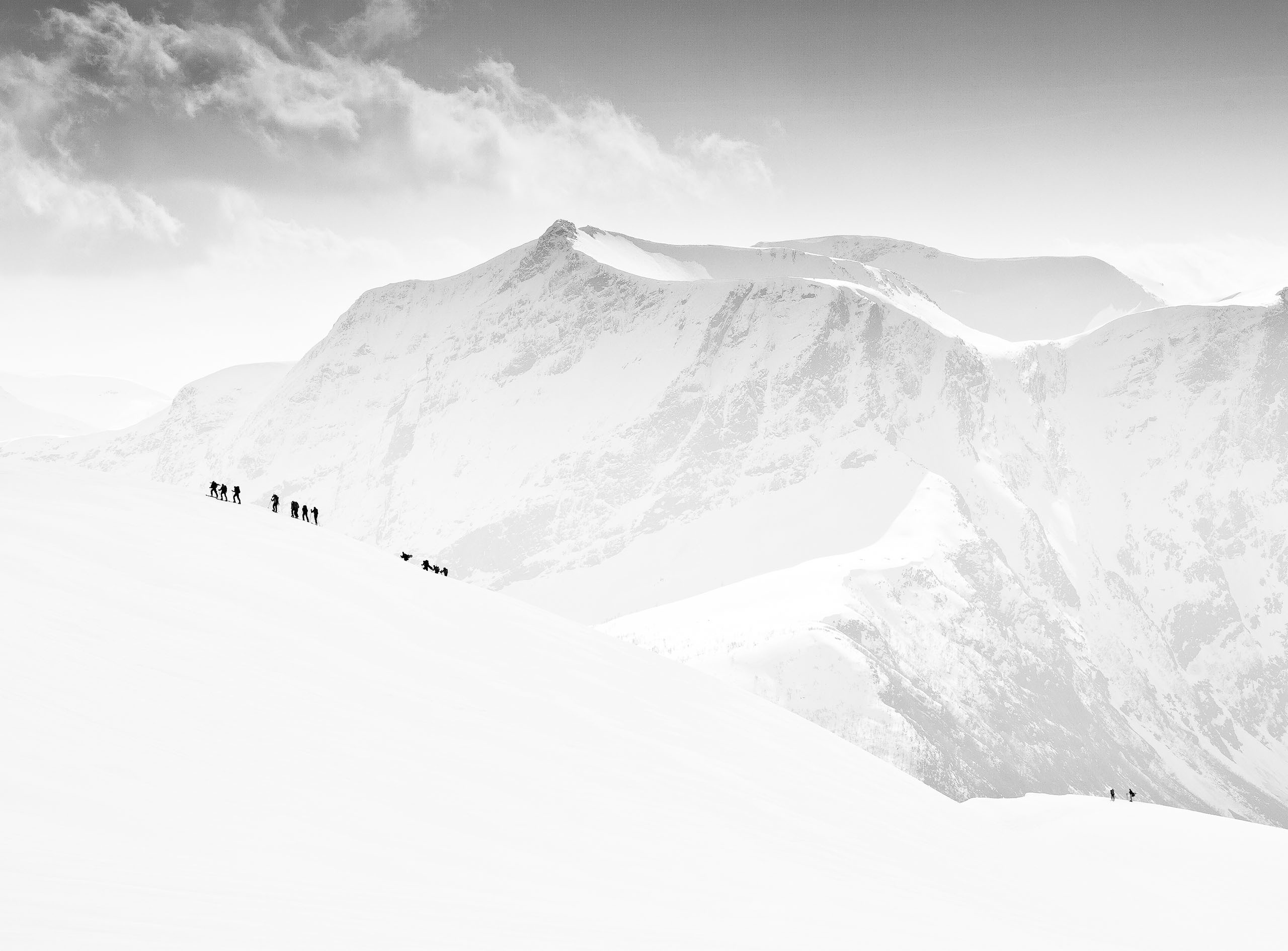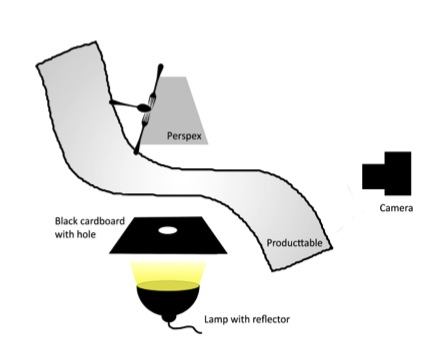The reason I started with cutlery was because of my job. I teach mechanical engineering at the University of Twente in the Netherlands and was offered the opportunity to give part of a course about product photography. Previously, I only had experience in photographing insects in our backyard, so I had to practice with objects and lighting: I started with a spoon.
It all started a while ago in my bedroom: a place for me to experiment — with photography, of course! It is a small space and at the time I had very little equipment. My first cutlery picture was of a single spoon and its reflection. I just had a small piece of Perspex (a shiny, milk-white type of plexiglass), a small lamp and some boxes to support the Perspex. By playing around with the spoon and the lamp, I soon discovered that it created an interesting reflection with plenty of symmetry. Through trial and error I eventually found the best position for both the light and the camera to get the best results.
"This picture started with the idea of six or seven spoons lying in a circle, like a flower, photographed from above. That didn’t work; there were no reflections and the lighting was poor."
Once I had discovered the potential of cutlery and their reflections, I started to experiment again (not in our bedroom this time — I had been promoted to the loft!). Some of the pictures were successful, which kept me seeking better compositions. This picture started with the idea of six or seven spoons lying in a circle, like a flower, photographed from above. That didn’t work; there were no reflections and the lighting was poor. Then I tried to do the same with spoons that I had previously done with forks: six spoons in a row, with one fork in between. That didn't work either, but I noticed the reflection of the fork in the Perspex as well as the reflection of the fork in the spoons. That's when I realized that I just needed to play around with the composition and my equipment, especially the size of the Perspex (approx. 8×14" or 20×40 cm), which was difficult to work with because there was barely enough space for the reflection.For this picture I used a product table, but still used that very small piece of Perspex, which I put on top of the table. Beneath the table I positioned a lamp aiming straight upward (32 Watt, 4300K) with an 11.5" (29 cm) reflector. On top of the lamp I placed a piece of black cardboard with a hole cut out of the center about 2.5" (6 cm) in diameter. The lamp was placed close to the bottom of the tabletop, and the opening of the cardboard was directly beneath the spoon (which was in the middle of the picture).
"The camera was mounted on a tripod a little higher than the table; any higher and I found that I lost the reflection."
The final placement of the spoon was a bit of trial and error — too far back made the bottom of the spoon too dark and too far forward made the background too dark. It was essential to put the forks at the edge of the Perspex so that the horizon was (almost) exactly between the objects and their reflection. The camera was mounted on a tripod a little higher than the table; any higher and I found that I lost the reflection. I used a Sigma 105mm macro lens on my Sony Alpha 500, and I shot the image with an aperture of f/5, a 1/250 second shutter speed and an ISO of 200.I was looking for a strong graphical form and no color to detract attention from it. I wanted a picture for a wall, maybe in a restaurant, for example (now wouldn’t that be cool?) — a picture people could look at for a while before figuring out what they were actually seeing, since the spoon is not immediately recognizable. Of course lighting is very crucial, especially in this picture; not only for the atmosphere, but to create the right reflection.
"Sometimes you make a picture, and you like it a lot because of the time you spent on it, but that doesn’t mean it is a good picture."
The biggest compliment for an amateur like me is to hear that my work is enjoyed. Sometimes you make a picture, and you like it a lot because of the time you spent on it, but that doesn’t mean it is a good picture. The reactions on 1x.com help me to figure out what’s a good picture and what’s not. This one I felt had potential, and fortunately the viewers thought so too.
Since I always shoot in RAW format, post-processing is necessary, but this picture was simple and looked pretty good straight out of the camera. I used Adobe Camera Raw and Photoshop CS5 to process the image, making only a few adjustments.
1) The biggest problem with my camera is the noise, but Camera Raw handles that perfectly now. I made some adjustments in Noise Reduction, which improved it tremendously.
2) I converted the image to Grayscale (Image > Mode > Grayscale).
3) I then removed some distracting spots with the Clone Stamp tool.
4) Using the Brightness/Contrast tool, I decreased the Brightness in some of the reflections.
1) Look before you shoot. Try different compositions, move the light, and look from several angles to find the best combination of composition, light and point of view before you make the picture. When you think you have the right combination, then start making the photo and adjust the camera settings until you have the image you are after.
2) In daily life try to figure out with every object you handle whether it would be a good candidate for a picture. How would the object look combined with its reflection? Is the form suitable for the purpose?
3) Photography is like writing with light. I think the lighting is even more important than the composition: it gives a photo something magical. So concentrate on the light. What happens if you move a lamp? What does that do to the shadows or, as in this case, what happens to the reflection?
I am from the Netherlands. What started out as an exercise for my work, by teaching a small introduction into product photography, ended as a photo a bit more artistic than an image of ordinary cutlery. I still have to practice “normal” product photography, with white backgrounds and so forth. Before I had the opportunity to teach product photography, insect macro photography was my main interest. Macro photography makes me feel like a child — a completely new world opens up for me.
See here a selection of Wieteke's more recent "Cutlery Stories"
'Pacman'
 'Black Sunflower'
'Black Sunflower'
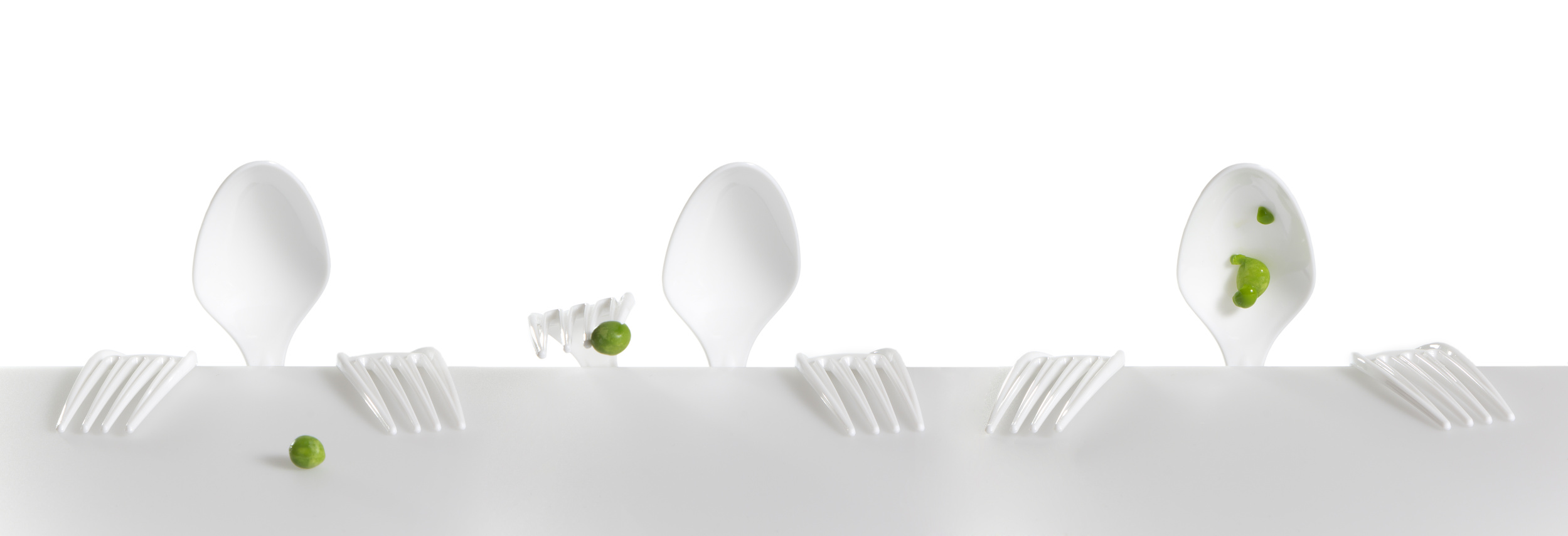 'Mine, mine, mine !!!'
'Mine, mine, mine !!!'
 'Spider'
'Spider'


